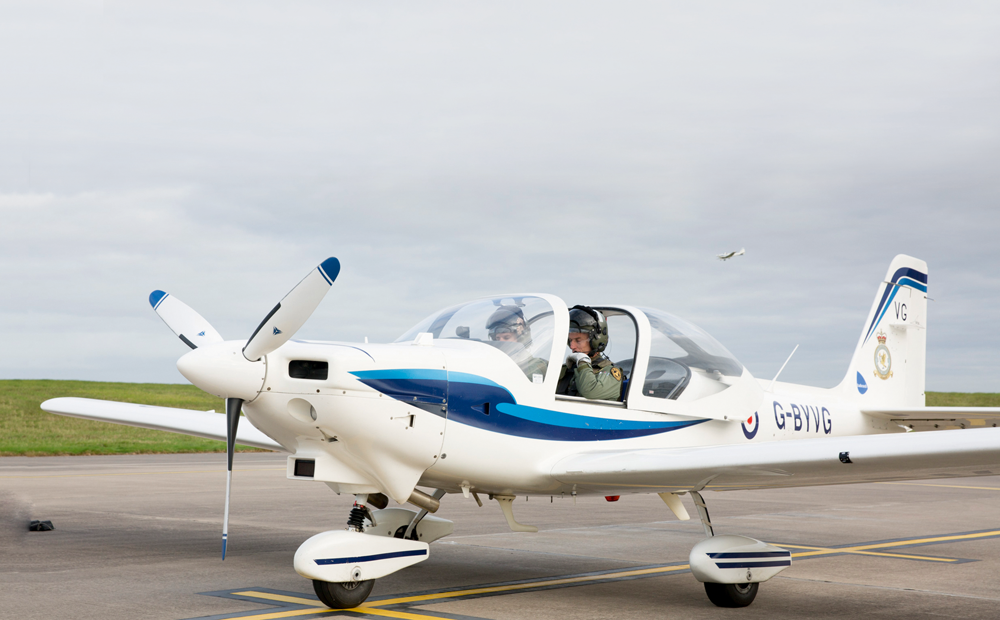About the Tutor T1
ROLE
The Grob Tutor T.Mk 1 is utilised by the Royal Air Force for University Air Squadron (UAS) elementary flying training and by the Fleet Air Arm and the Army Air Corps for flying grading. The Tutor equips 15 UASs and 13 Air Experience Flights (AEFs) throughout the UK, providing flying instruction to university students and air experience flying to the Air Cadet organisation. RAF Wittering is home to the remainder of 6 Flying Training School Units with 115 Squadron providing Tutor Qualified Flying Instructor Training, as well as the Tutor display team. As of March 2022, 16 Squadron became the 6 FTS Standards and Evaluation Squadron.
CAPABILITY
The Tutor is ideally simple to fly, yet also sufficiently demanding to be a fine elementary trainer. Its side-by-side seating arrangement maximises instructor/student interaction in the air, while its large cockpit canopy provides an excellent outside view for circuit flying.

TYPE HISTORY
First flown in 1985 as an aerobatic sportplane, the Grob G 115 was chosen to replace the Scottish Aviation Bulldog in UAS and AEF service, as well as to equip a Central Flying School (CFS) squadron, in June 1998. Ninety-nine aircraft were purchased and operated by VT Aerospace with civilian registrations. This system remains in force, with military personnel providing flying instruction and civilian contractors performing maintenance.
The CFS received its first Tutors on September 13, 1999 and the first UAS delivery, to Cambridge UAS, occurred the following day. The all-composite Tutor is named after the 1930s’ Avro Tutor basic trainer and remains in widespread service, although its EFT role is being taken over by the Grob Prefect.
Specifications
Grob Tutor T.Mk 1:
- Powerplant: one 180hp Textron Lycoming AE-360-B piston engine
- Length: 24ft 9in (7.54m)
- Height overall: 9ft 3in (2.82m)
- Wingspan: 32ft 9¾in (10m)
- Wing area: 131.40sqft (12.21m2)
- Maximum take-off weight: 2,182lb (990kg)
- Never exceed speed: 185kt (343km/h)
- Maximum rate of climb at sea level: 909ft/min (277m/min)
- Range at 75% power with 45-minute reserves at 4,000ft: 446nm (826km)
- Maximum altitude: 10,000ft






